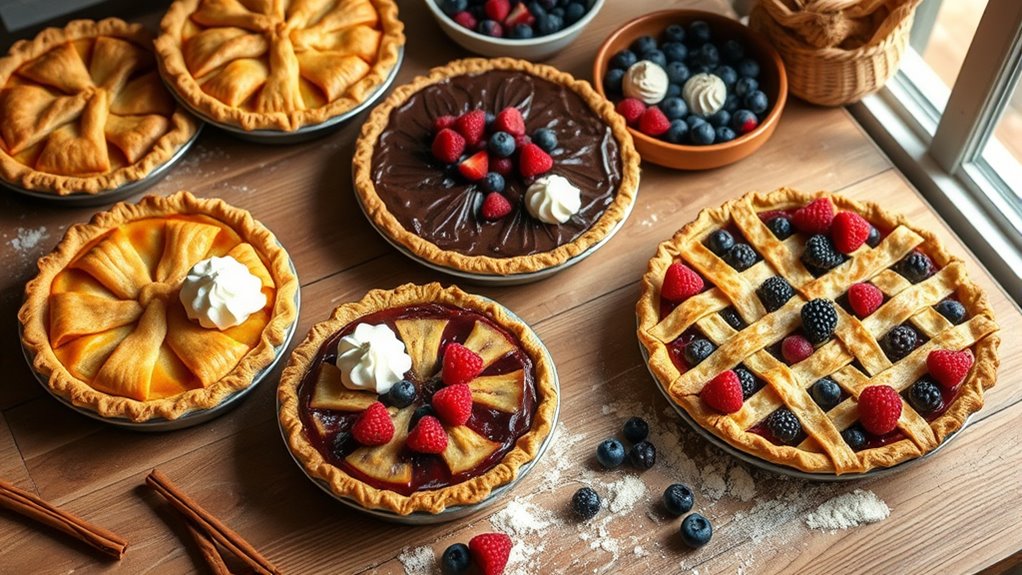If you’re craving a delicious pie, start with a balanced mix of 2 ½ cups of all-purpose flour, 1 cup of cold unsalted butter, and ¼ cup of sugar for the crust. Choose your favorite fresh fruit filling, toss it with sugar and spices, then pour it into your prepared crust. Bake until golden and fragrant! With a few simple tools and these guidelines, you’ll craft the perfect pie. Discover more tips and techniques to elevate your pie-making experience!
Ingredients and Quantity
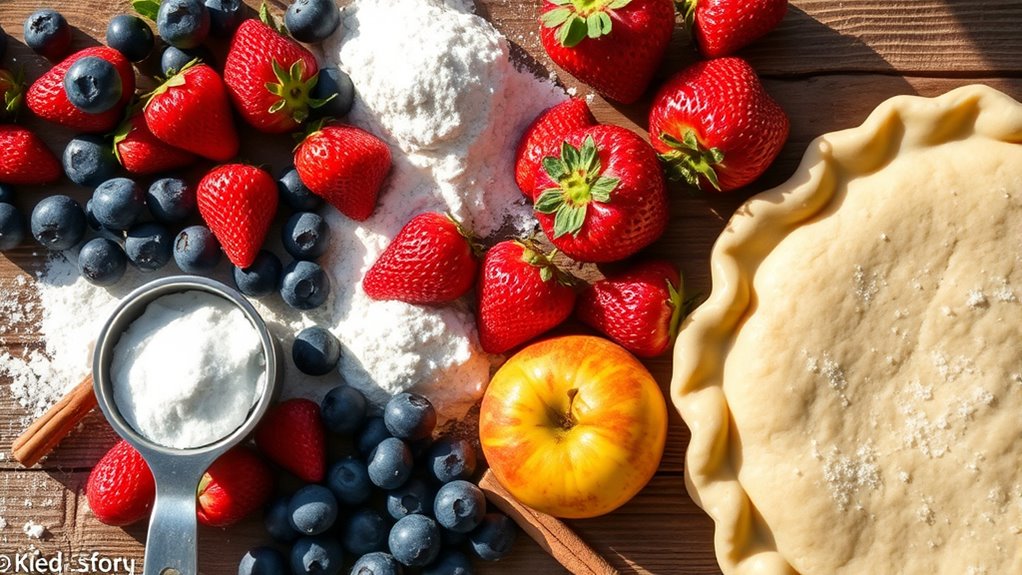
When it comes to pie-making, having the right ingredients in the right quantities is essential for that perfect crust and filling. The balance between a flaky pie crust and a delectable filling can make or break your dessert. Here’s a quick guide to help you get started:
| Ingredient | Quantity |
|---|---|
| All-purpose flour | 2 ½ cups |
| Unsalted butter | 1 cup (cold) |
| Sugar | ¼ cup |
| Filling options | |
| Fresh fruit | 3 cups |
| Sugar (for filling) | ½ cup |
With these basics, you’ll have the freedom to explore various filling options, from classic apple to luscious chocolate, ensuring each pie is a delightful adventure!
Preparations
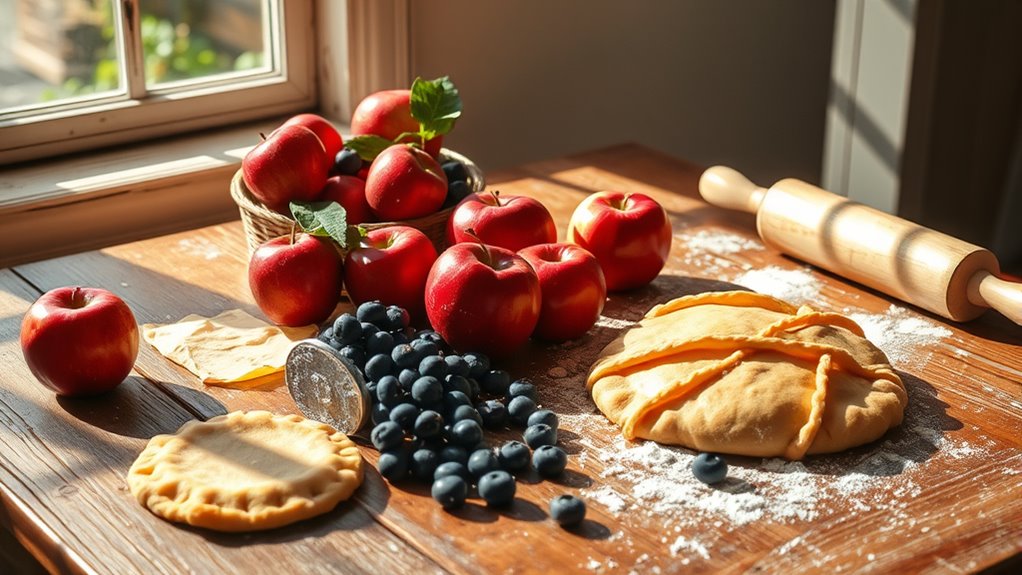
Now that you’ve gathered your ingredients, it’s time to prepare for pie-making magic. First, let’s get that pie crust ready. If you’re using a store-bought crust, simply unroll it into your pie dish. For homemade, roll out the dough until it’s about a quarter-inch thick, then fit it snugly into the dish. Trim any excess, but don’t stress about perfection—quirks add charm!
Next, focus on your filling techniques. Whether you’re working with fresh fruits, custards, or savory mixtures, make sure everything’s well-combined. For fruit fillings, consider tossing your fruits with sugar and spices, letting them marinate a bit for enhanced flavor. With your crust and filling prepped, you’re on the brink of creating something delicious. Enjoy this freedom to experiment!
Tools / Kitchenware Required
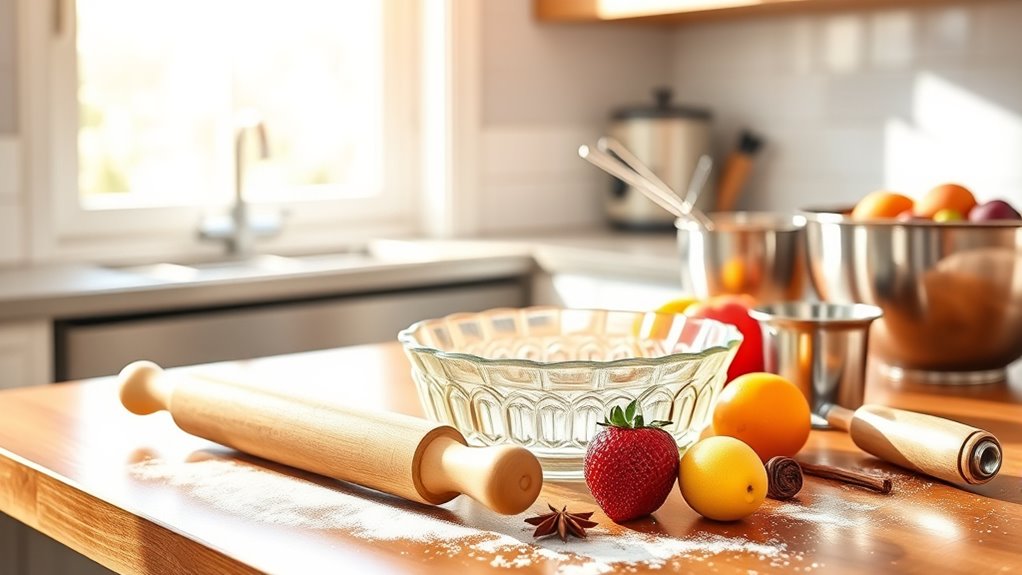
Creating the perfect pie requires a few essential tools that will make your baking experience smoother and more enjoyable. Investing in the right baking tools can unlock your creativity and allow you to express your culinary freedom.
| Essential Tool | Purpose |
|---|---|
| Pie Dishes | For baking and serving pies |
| Measuring Cups | For precise ingredient amounts |
| Rolling Pins | To roll out your pastry dough |
| Pastry Brushes | For glazing and adding finishes |
| Oven Mitts | To protect your hands from heat |
| Cooling Racks | To cool pies evenly |
| Food Processors | For quick pastry or filling prep |
With these tools, you’re ready to bake delicious pies that will impress friends and family alike!
How to Cook
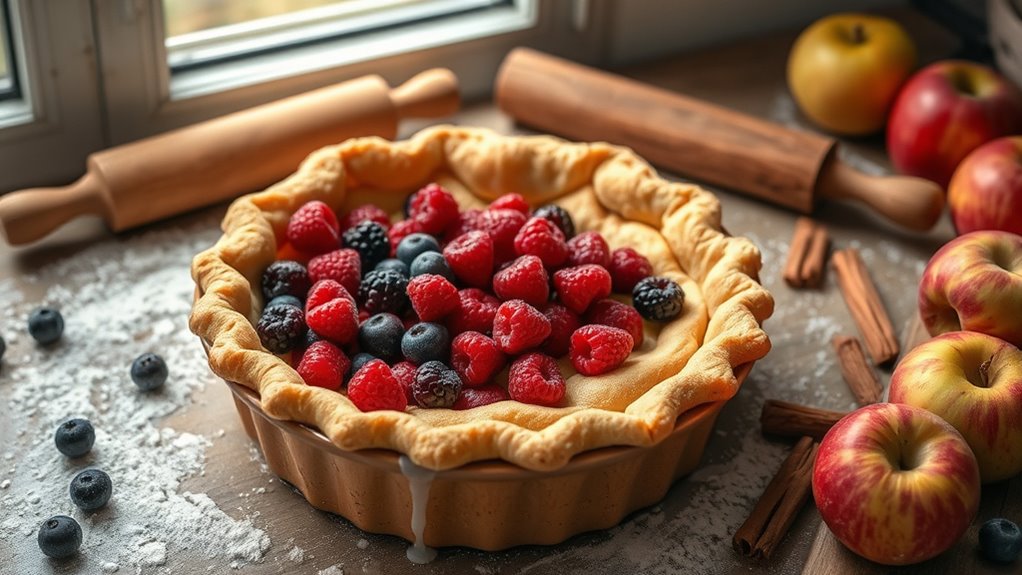
- Prepare your pie crust, whether homemade or store-bought.
- Roll out the crust evenly and gently press it into your pie dish.
- Choose your filling options, such as sweet fruits (apples, berries) or savory options (pumpkin, quiche).
- Pour the chosen filling into the crust, ensuring it is evenly distributed.
- Carefully fold the edges of the crust for a neat and attractive finish.
- Bake according to your recipe instructions until the crust is golden brown and fragrant.
- Allow the pie to cool slightly before serving.
- Enjoy the satisfaction of your homemade pie, crafted with care!
How to Serve
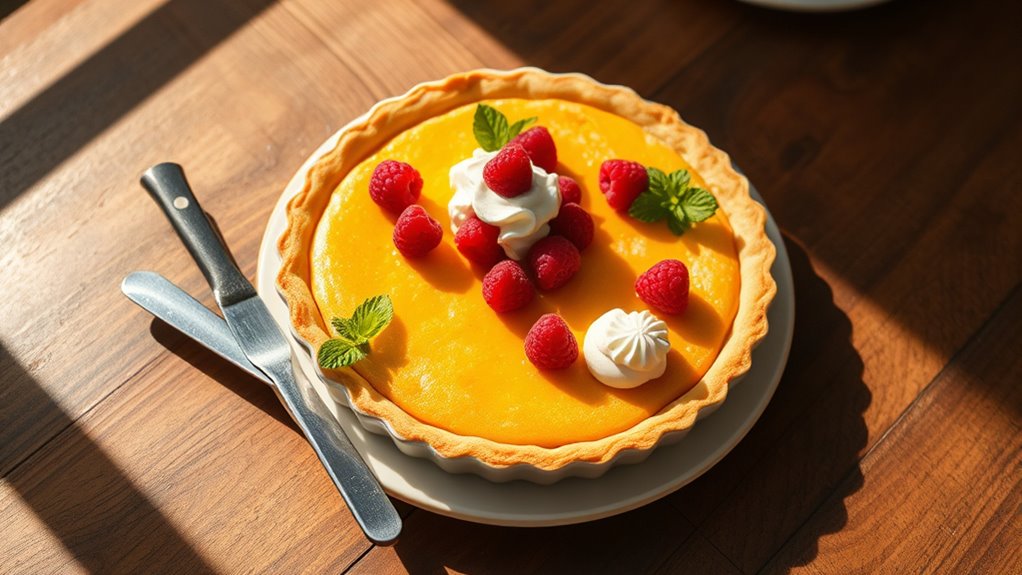
Once your pie has cooled to a perfect serving temperature, it’s time to elevate the experience of enjoying it. With a few thoughtful serving suggestions and presentation techniques, you can transform a simple pie into a show-stopping dessert.
- Slice with care: Use a sharp knife for clean, even pieces.
- Add toppings: Serve with a dollop of whipped cream or a scoop of ice cream.
- Garnish beautifully: Fresh berries or mint leaves can add a pop of color.
- Use decorative plates: Presenting your pie on elegant dishware enhances the overall feel.
Tips
While baking a pie may seem straightforward, there are several tips that can elevate your creation from ordinary to extraordinary. First, don’t skimp on your pie crust; a flaky, buttery crust is the foundation of any great pie. Use chilled ingredients and avoid overworking the dough to keep it tender. Experimenting with flavor variations can also breathe new life into your pie. Consider adding spices like cinnamon or nutmeg to fruit fillings, or a splash of vanilla for richness. If you’re feeling adventurous, try incorporating nuts or citrus zest for that extra zing. Finally, let your pie cool completely before slicing; this helps the filling set, ensuring each slice looks as good as it tastes. Happy baking!
Food Value and Benefit
Pies are not only a delicious dessert but also offer valuable nutritional benefits depending on their ingredients. This prepared dish provides a balanced combination of essential nutrients that contribute to overall health and wellness.
Food Value of the Pie:
- Rich in vitamins such as Vitamin C (from fruits), Vitamin E (from nuts), and B-complex vitamins (from whole grains).
- Contains important minerals including potassium, magnesium, and iron.
- Provides dietary fiber from whole grain crusts and fruit fillings.
- Contains healthy fats and protein from nuts.
Benefits of Eating This Pie Recipe:
- Boosts Immune System: Fruits in the pie supply antioxidants and Vitamin C, which help strengthen immunity.
- Supports Digestive Health: Whole grain crusts offer dietary fiber that aids in digestion and promotes a healthy gut.
- Enhances Heart Health: Nuts contribute healthy fats and protein, which can improve cardiovascular function.
- Reduces Inflammation: Spices like cinnamon have anti-inflammatory properties and can help regulate metabolism.
- Provides Essential Nutrients: The combination of vitamins and minerals supports overall body functions, energy production, and cellular repair.
Enjoying this pie allows you to indulge in a tasty treat while nourishing your body with essential nutrients.
Frequently Asked Questions
Can I Substitute Gluten-Free Flour in Pie Recipes?
Absolutely, you can substitute gluten-free flour in your recipes! Think of it as swapping a sturdy oak tree for a graceful willow. While gluten-free alternatives can offer a different flour texture, they can still create delicious results. Just remember, some blends work better than others, so experimenting is key. You might need to adjust your liquid ingredients or add binding agents, but don’t worry—you’ll find that freedom to create delightful treats!
How Do I Store Leftover Pie Properly?
To store leftover pie properly, you’ll want to guarantee it’s sealed well. First, let it cool completely, then wrap it tightly in plastic wrap or foil. If you’ve got a pie container, that’s even better for proper sealing. Store it in the fridge, where it can last for about 3-4 days. For longer storage, consider freezing it, but make certain you’ve got it wrapped securely to maintain freshness and flavor!
What Are Common Pie Crust Mistakes to Avoid?
When making pie crust, avoid common mistakes like overworking the dough, which can lead to a tough texture. Don’t forget to chill it before rolling out; this helps maintain its flakiness. Blind baking is essential too—if you skip it, your crust might end up soggy. Also, make sure you’re docking the crust with a fork to prevent bubbling. With these tips, you’ll create a perfectly balanced and delicious pie crust every time!
Can I Freeze a Baked Pie for Later?
Yes, you can freeze a baked pie for later enjoyment! Just make sure it’s completely cooled before wrapping it tightly in plastic wrap and aluminum foil to prevent freezer burn. Freezing tips include labeling it with the date and type of pie, so you know what you’re diving into later. When you’re ready to indulge, let it thaw in the fridge overnight, and then warm it up to restore that fresh-baked goodness!
How Can I Tell When a Pie Is Done Baking?
To tell when your pie’s done baking, look for a golden-brown crust and bubbling filling. A great baking tip is to gently shake the pie; if the filling jiggles slightly but isn’t sloshing, it’s ready. Additionally, check the edges for a firm texture. These pie indicators will help you achieve that perfect finish. Trust your instincts and enjoy the process; you’re creating something delicious and rewarding!
